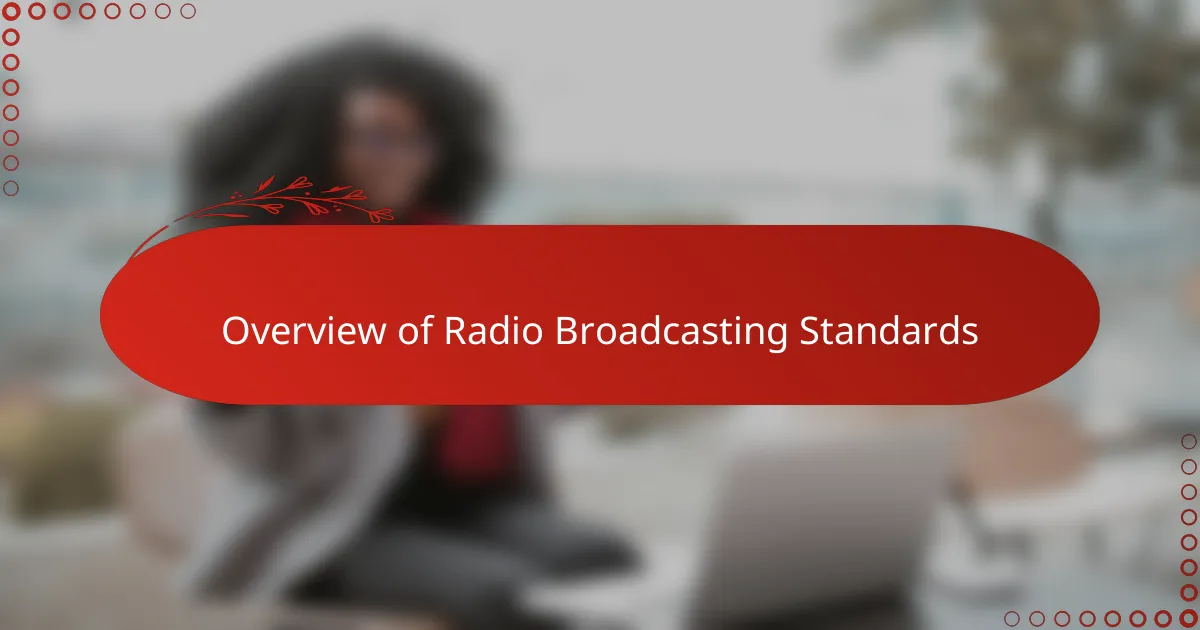Key takeaways
- Content rating systems serve as valuable guides for listeners, helping them choose radio programs that align with their values and comfort levels.
- Radio broadcasting standards ensure content is suitable for various audiences, balancing creativity and listener protection.
- Key rating systems like Nielsen Audio and age-appropriateness ratings help broadcasters tailor their programming based on audience preferences.
- Challenges in rating include subjectivity, live content unpredictability, and the need for ratings to reflect diverse audience perspectives.

Understanding Content Rating Systems
Content rating systems often seem like just a set of labels, but I’ve found they play a crucial role in how I choose what to listen to on the radio. Have you ever wondered how those simple letters or numbers can shape your experience? To me, they act like a guide, signaling whether a program aligns with my values or mood at a given moment.
When I first encountered these systems in radio broadcasting, I didn’t pay much attention. Yet, over time, I noticed that understanding the ratings helped me navigate content more responsibly, especially when tuning in around family. It’s almost like having a personal filter, one that respects both creativity and the listener’s comfort.
I think one reason these systems matter is that they create a shared language between broadcasters and audiences. Without them, how would we know what’s appropriate or what to expect next? From my perspective, this clarity reduces surprises and builds trust, making radio listening a more thoughtful and enjoyable experience.

Overview of Radio Broadcasting Standards
Radio broadcasting standards set the framework that shapes what goes on air. When I first learned about these standards, I realized they aren’t just technical rules—they’re the backbone that ensures content fits various audiences. Have you ever considered how much thought goes into what you hear on the radio? It made me appreciate the effort behind every program more deeply.
These standards cover everything from language use to advertising limits, and they vary depending on the region or country. From my experience, knowing these guidelines helped me understand why certain shows felt more suitable during the day while others aired late at night. It’s almost like the radio has its own set of traffic lights, directing when and how content should flow.
I also noticed these standards aim to protect listeners without stifling creativity. That balance struck me as both challenging and essential. Have you ever tuned into a show that pushed boundaries but still felt respectful? That’s the tightrope broadcasters walk because of these standards, creating a safe yet engaging space for everyone.

Key Rating Systems in Radio Media
Content rating systems like the Nielsen Audio ratings or RAJAR in the UK have been my go-to tools for understanding what the majority of listeners prefer. When I first checked these ratings, I realized they didn’t just reflect popularity but also helped stations tailor their programming to audience expectations. Have you ever noticed how your favorite shows seem to hit the right note consistently? That’s no accident—it’s the result of these rating systems guiding decisions behind the scenes.
Another system I pay attention to is the age-appropriateness rating, which often flies under the radar. At first, I underestimated its importance until I caught my younger sibling listening to a late-night talk show that wasn’t exactly kid-friendly. Since then, I’ve seen how these ratings act as a safeguard, helping me recommend content that fits the listener’s age and sensitivity. Isn’t it comforting to know there’s a little safety net protecting families like mine when tuning in?
What fascinates me most is how these systems create a feedback loop between broadcasters and audiences. When I heard about stations adjusting their content based on listener feedback and rating shifts, it felt like a direct conversation was happening—even if it was through numbers and metrics. Doesn’t it make you appreciate radio a bit more, knowing it’s constantly evolving to serve its community better?

Methods for Evaluating Radio Content
Evaluating radio content often starts with listening closely to the tone and language used. I remember tuning into a late-night show where the dialogue felt surprisingly raw, and that made me pause—was it appropriate for all audiences? This kind of immediate reaction pushed me to consider how simply hearing the nuances can guide my judgment before even checking ratings.
Another method I rely on involves analyzing listener feedback and surveys. When I first saw how broadcasters used real opinions to tweak their shows, it clicked for me—content evaluation isn’t just about what’s on air but how it resonates. Have you ever noticed how your favorite program evolves over time? That’s because someone, somewhere, is paying attention to what listeners really want.
Finally, I often compare time slots to the content being aired, which helps me understand the underlying rating logic. For example, daytime shows tend to be lighter and more family-friendly, while late-night broadcasts can push boundaries. Noticing these patterns made me appreciate the strategic decisions behind programming and strengthened my trust in how content is rated and scheduled.

My Approach to Content Rating
When it comes to my approach to content rating, I’ve learned to trust both the systems in place and my own instincts. There have been moments when a rating alone didn’t tell the full story, prompting me to listen more deeply before making a judgment. Have you ever found yourself surprised by a show that was rated “clean” but still felt off? That’s exactly why I believe ratings are guides, not gospel.
I also take the context into account. For example, if I’m listening with family around, I’m naturally more cautious and rely heavily on the age-appropriateness indicators. I remember a time when I switched the station after realizing a program marked for general audiences had unexpectedly strong language. That experience taught me the importance of pairing ratings with situational awareness—it’s not just about what’s allowed, but what feels right in the moment.
Lastly, I appreciate when content ratings open a conversation rather than close it. When a show challenges norms but stays within its rating, it invites me to think critically and engage more actively. Have you ever caught yourself debating whether a “PG” show pushed the envelope just enough? Those moments make listening feel dynamic and personal, which is ultimately why my approach to content rating is both flexible and thoughtful.

Challenges in Rating Radio Broadcasts
Rating radio broadcasts isn’t as straightforward as it might seem. I’ve often found myself puzzled by how to fairly judge shows that mix humor, news, and opinion all in one segment. How do you decide what crosses the line when tone and context vary so much in just a few minutes? This challenge made me realize that rating radio is as much an art as it is a science.
Another tricky part is balancing subjective tastes with objective standards. I remember listening to a late-night program that seemed perfectly fine to me but raised eyebrows among others in my family. It made me wonder: can a single rating ever truly capture everyone’s comfort level? From my experience, this discrepancy often leaves room for misinterpretation and highlights the limits of one-size-fits-all ratings.
Then there’s the issue of real-time changes during live broadcasts. Unlike TV or online videos, radio often happens live, making it impossible to predict or edit content beforehand. I recall a moment when a guest unexpectedly used strong language, catching the broadcaster—and me—off guard. That instant unpredictability adds another layer of complexity to rating radio content reliably.

Applying Ratings to Improve Programming
Applying ratings to improve programming has always struck me as both a practical and creative process. When I noticed a drop in listener engagement during certain time slots, diving into the ratings helped me pinpoint exactly which segments felt off. It’s like having a roadmap that highlights where the show needs tweaking to better resonate with the audience.
I remember a time when feedback from ratings led to shifting a talk show’s focus from heavy politics to more lifestyle content. The immediate uptick in positive responses made me realize how powerful these numbers can be—not just as cold data, but as signals reflecting what listeners truly want. Have you ever experienced that moment when a simple change transforms a program’s vibe? That’s the magic of applying ratings thoughtfully.
But it’s not just about chasing higher numbers. Sometimes, a program with modest ratings still serves an important niche, and ratings help identify and preserve that value. I think using these insights with a balanced perspective ensures programming stays both popular and meaningful, which, from my experience, is the ultimate goal for any radio broadcaster.
